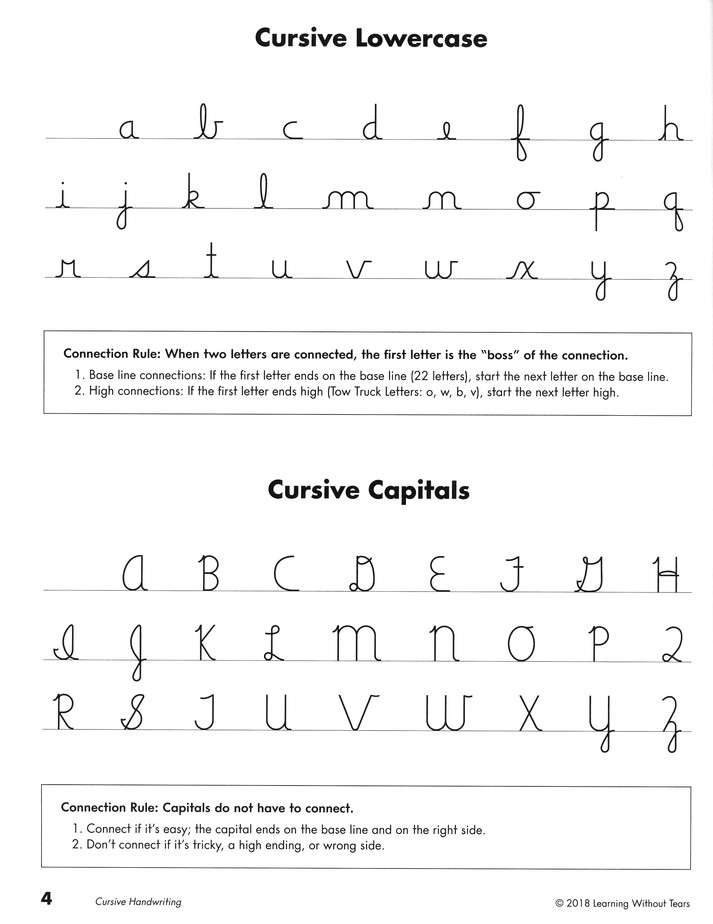Cursive handwriting is making a comeback. Twenty-three states now require cursive instruction in their curriculum. And schools’ renewed respect for teaching cursive and handwriting isn’t about some retro nostalgia—literacy leaders are riding the wave of neuroscience. Turns out, putting pen to paper accelerates learning.
Research Supports Cursive
If you are a leader hoping to implement a handwriting program at your school or a teacher wanting to inform parents, use the following links to show the strong research base.
Cursive activates a unique “reading circuit” in the brain.
Studies have shown that when children write in cursive, there is more activation in both hemispheres of the brain than when children are typing on a keyboard. (https://www.sciencedirect.com/science/article/abs/pii/S2211949312000038?via%3Dihub)
Cursive helps the brain learn and recall information better. (https://www.frontiersin.org/articles/10.3389/fpsyg.2020.01810/full)
Learning to form letters by hand contributes to better reading and spelling.
Berninger, V. (2012). Strengthening the Mind’s Eye. Principal. https://www.naesp.org/
Cursive’s Modern Make-Over
Just as people predicted TV would make radio extinct, many figured keyboarding would replace handwriting. And certainly cursive, with its antiquated slant and fancy schmancy curlicues. But today, teachers can teach cursive in the easiest way, which is without the tilt (check out Handwriting Without Tears®).

The reason you see historical documents written with a slanted stroke is because they used quill pens! When using a quill pen, the writer had to slant upwards or the ink would spill and splatter. So it’s safe to say we can put away the quills and inkwells and teach students contemporary cursive.
Students Connect the Letters within Words
What does cursive give students that printing doesn’t? Writing speed, which leads to fluency, which leads to more efficient notetaking and composing. Cursive is faster. It’s not those flourishes that count—it’s that cursive is about the connections. Students connect the letters together within a word. They aren’t picking up their pencil after each letter, and as a result, are less likely to do reversals or misspell.
Cursive as a Step Toward a Signature Style
Cursive writing takes time to master. Years, really. Children have to learn to shape letters accurately, and this takes effort and hand-eye-brain coordination. As students write, they cement their grasp of letter/sound relationships, which supports their development as readers. Learning cursive does not mean students are forever locked into a particular penmanship. We want them to use this skill throughout their lives. Teachers teach it in the early grades, and as children advance through school, they develop their own style of writing through personalization.
Ten Minutes a Day for Big Student Gains
The literacy block is already chock full. Spelling, phonics, reading, writing, and so on. So I get it. As a former teacher myself, I know that feeling of just where am I going to fit this in? Handwriting instruction only requires 10 minutes a day to have an enduring impact. Because once students acquire the skill of cursive writing, it becomes the literacy gift that keeps on giving—they use it as a tool for learning. (Arnold, et al., 2017). They use it to take notes in content areas throughout the day, and the very act of writing helps students consolidate their understanding. I encourage teachers to ensure cursive writing occurs by requiring notetaking with a pencil or pen and not digital devices.
Beyond notetaking, students can be asked to use cursive writing for authentic writing purposes, for example, when writing letters to family and people in the community and persuasive pieces to the principal. In all you do to be a part of this cursive comeback, keep it fairly short and simple—a few sentences, a paragraph. After all, they aren’t writing the Declaration of Independence.
Learn more about the power of cursive writing by watching our episode of Literacy Matters: Empowered Conversations with guests Dr. Christina Bretz and Dr. Suzanne Asherson.